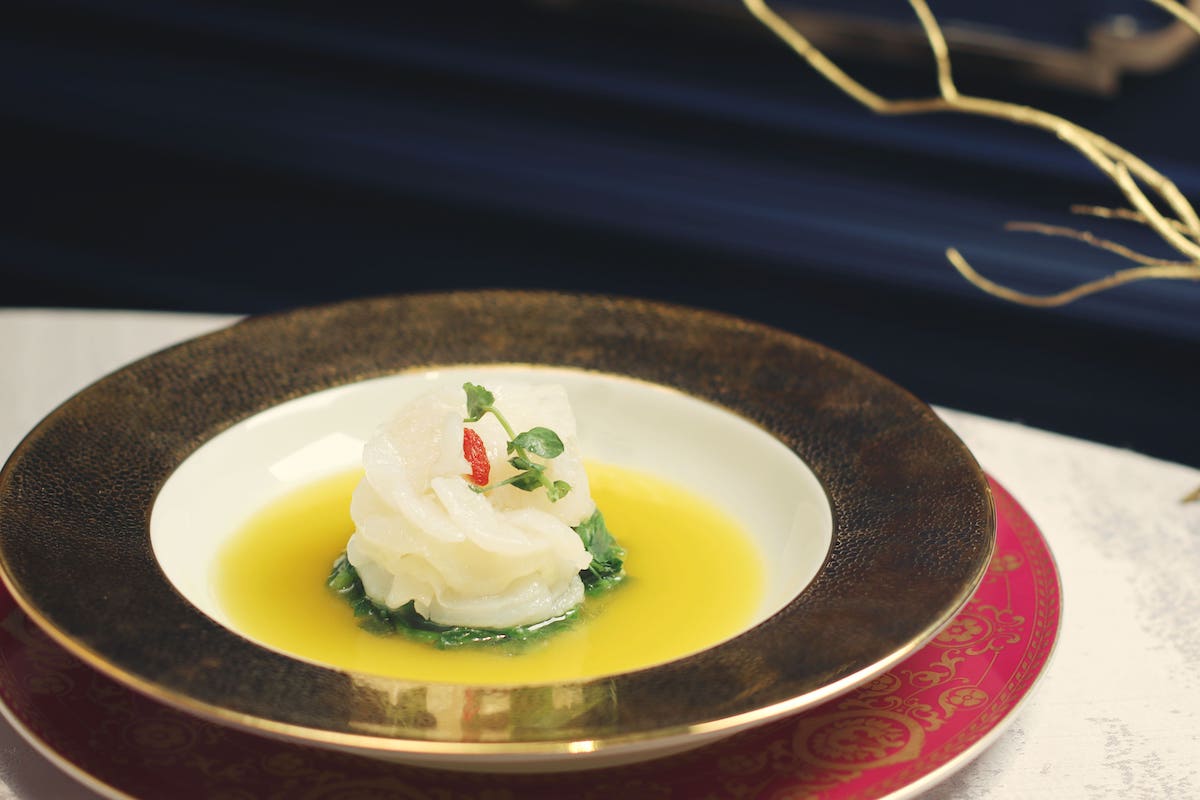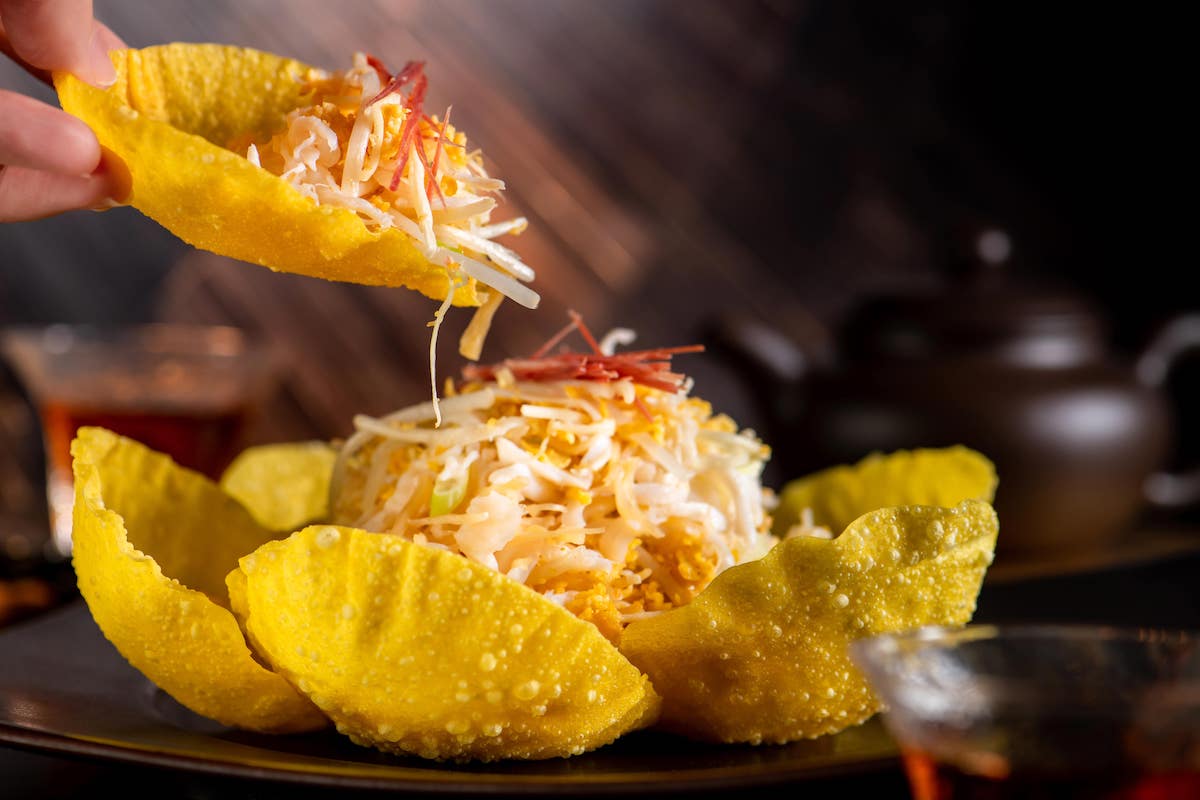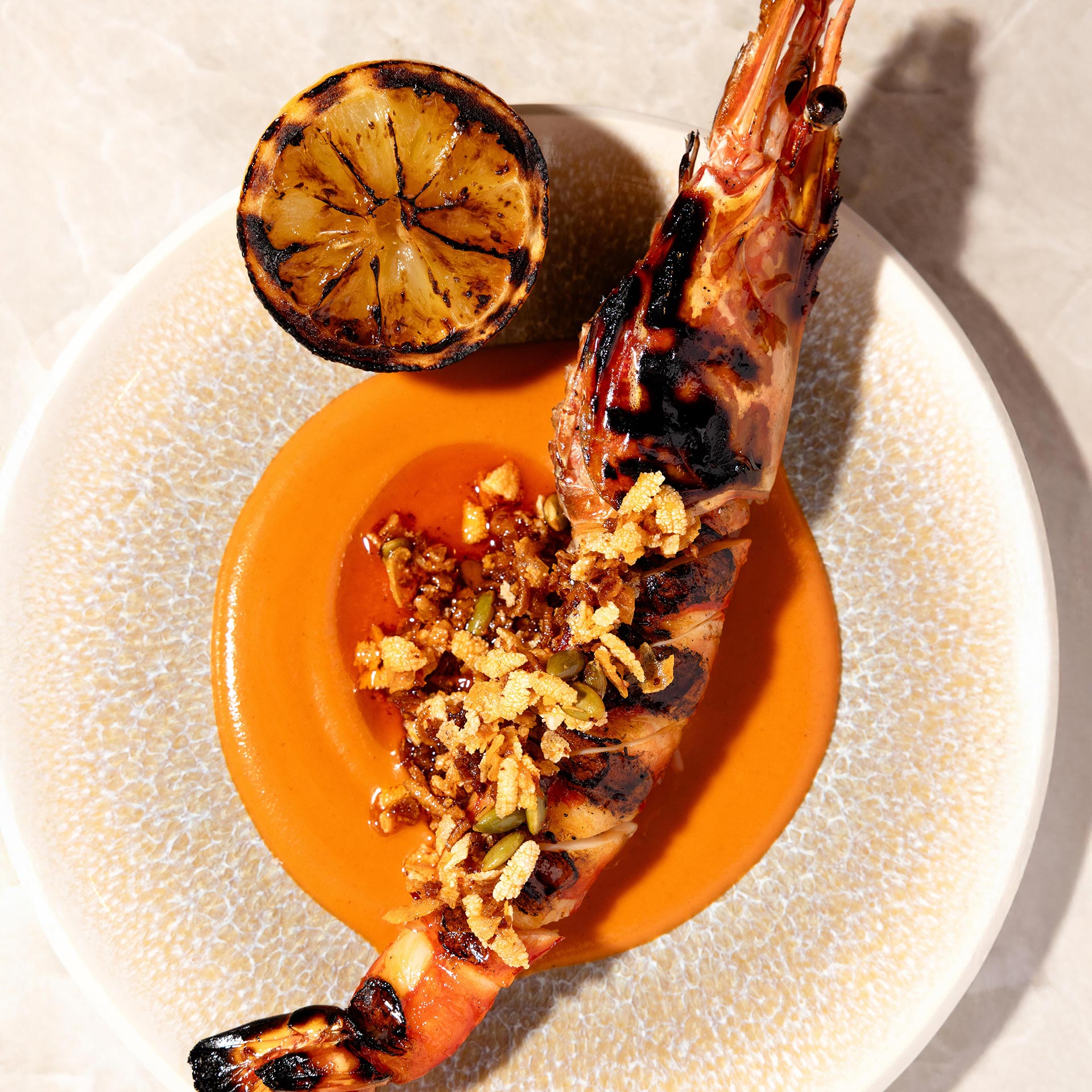In the past, Cantonese restaurants offered some very laborious handcrafted creations on the menu. They were time-consuming to prepare and cook, which also meant longer meals for diners. This was not an issue back then, as chefs were given more time to cook, and diners can take their time to enjoy these prized dishes.
Following rapid changes and the booming economy in the 80s and 90s, people began to pursue efficiency and a faster pace of life. Less and less time was spent at the dining table, so it was more commercially viable for Cantonese restaurants to simplify their menus, and sadly, resulted in the disappearance of some of these labour-intensive dishes.
Fast forward to 2022, Hong Kong has no shortage of fine restaurants. Ordinary dishes no longer serve the creative pursuits of chefs or the curiosity of discerning diners; but great news for us: these vanishing artisanal Cantonese treasures are now making a comeback.
Man Wah
One MICHELIN Star, MICHELIN Guide Hong Kong Macau 2022
Deep-fried custard, or gwo zaa, is a traditional Cantonese snack that reached its height of popularity in the 80s. Broth, egg yolk and corn starch are mixed into a paste then refrigerated for at least six hours until it solidifies. The custard is then cut into diamond shapes, lightly coated with corn starch and deep-fired at a high temperature of over 200°C. With a timeless and unforgettable flavour, the bite-sized morsel has a crunchy exterior and is smooth and fluffy on the inside with a rich eggy aroma.
Man Wah’s Executive Chinese chef Wong Wing-Keung was taught how to make traditional gwo zaa by Cantonese cuisine veteran Theresa Mak (better known as Dashijie). With relentless practice, he was able to achieve consistent quality and began experimenting by adding sea urchin. “But the taste of sea urchin is too overpowering and the flavour dulls after cooking, so we replaced it with matsutake mushrooms, which are also packed full of umami with a rich flavour,” says chef Wong. Gwo zaa must be eaten while it’s still hot, so chef Wong always reminds the front of house staff to have the diners eat the gwo zaa before any other dish.

Apart from gwo zaa, chef Wong also recommends the stir-fried prawn in supreme broth. The traditional way to prepare the prawn is to soak or rinse it under running water until it becomes translucent. However, this causes the prawn to lose flavour, so the dish has been gradually disappearing from Cantonese menus. Chef Wong’s version uses only large Australian prawns that weight roughly 250g each, and he only soaks them in water to retain the crustaceans’ natural, original flavour. For the supreme broth, animal fats such as pork rind and chicken feet are often used to lend a gelatinous texture. Instead, chef Wong has chosen to use Chinese lotus seed and fish maw which are equally viscous but more refreshing.

The Legacy House
MICHELIN Selected Restaurant, MICHELIN Guide Hong Kong Macau 2022
Once appeared in The Legacy House’s winter menu is a soup that very few in Hong Kong still know how to make: the lamb cheek and knuckle soup. Chinese executive chef Li Chi-Wai learned how to make this dish when he was an apprentice. “Back then, restaurants often had lamb’s head and knuckles left over. Both have very little meat, and lamb skulls don’t look so good, so these were used to make soup.” The original broth only contains lamb, but chef Li is inspired by how snake soup is made, and added tangerine peel, ginger, sugarcane and water chestnut to keep this tonic nourishing while balancing the heat. French quail is used in place of old chicken, which lends a sweet umami. Finally, all the meats are shredded and the soup is added with shredded fish maw; the rich, exquisite lamb cheek and knuckle soup is ready. However, whole lamb carcasses are rare in Hong Kong, and the making of this dish is an arduous process, so chef Li suggests diners to pre-order this winter dish when it does become available.

Another Cantonese classic recommended by chef Li is the wok-fried lobster with egg. The traditional wok-fried shark fin with egg is unsustainable, expensive and laborious to prepare, so nowadays shark fin is usually replaced with sprouts. The chef at The Legacy House wok-fries the eggs, sprouts and lobster under carefully controlled heat until each strand is crisp and dry. Shredded ham is then sprinkled on top as the final step to creating this reinvented classic.

Yan Toh Heen
Two MICHELIN Star, MICHELIN Guide Hong Kong Macau 2022
Sauteed egg whites with milk is a classic Shunde dish that was very popular in the 80s and 90s in Hong Kong. Egg whites and Daliang milk curd slices are the core ingredients, and Indian almonds, barbecued pork or even chopped seafood mix are sometimes added to the dish. This dish is a true test of a chef’s wok-frying ability: it is very difficult to get the perfect soft consistency without being runny, all the while keeping it smooth, white and fluffy and retaining the milky aroma; it is no wonder less and less chefs know how to craft this dish. The chef at Yan Toh Heen is determined to keep this tradition alive. Cow’s milk is used in place of large amounts of water buffalo milk curd slices. Corn starch is added in, and the mixture is rolled around at the bottom of the wok until cloud-like curds start to form, creating fine layers of silky stir-fried milk. The addition of local lobster and crab roe injects bursts of umami and takes this treasured dish to new heights.
(Pictured left: to make sauteed egg whites with milk, it’s important to use equal parts milk and egg white. Too much egg white will result in the texture being too firm)
CONTINUE READING: Michelin Movers and Shakers: Plaa, Bo Innovation, The Demon Celebrity and TATE’s 10th Anniversary menu
Hero Image: Gwo zaa is easy to learn but difficult to master. To retain the beautiful diamond shape after deep-drying, it is crucial to get the correct ratio between eggs, broth and corn starch. (Photo: Man Wah)
Text by Gloria Chung, translated by Iris Wong. Read original article here.




















